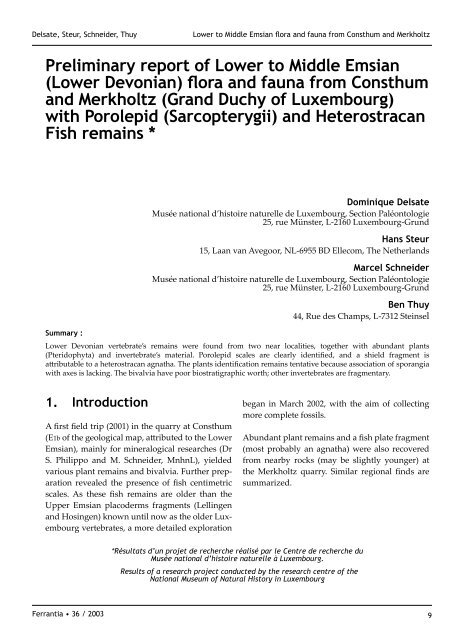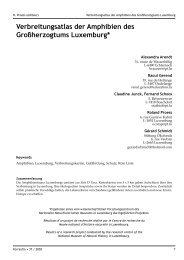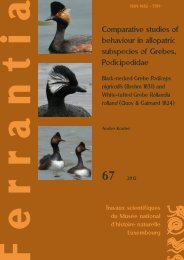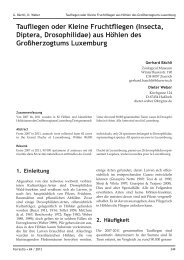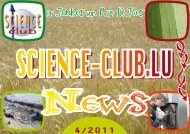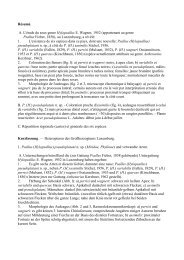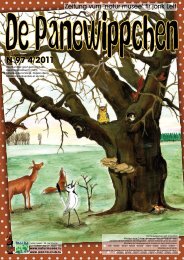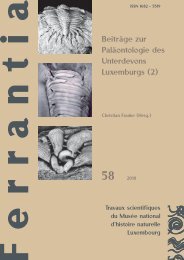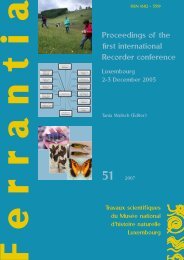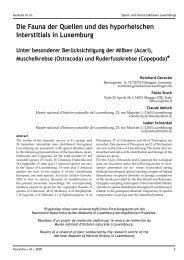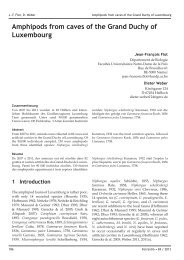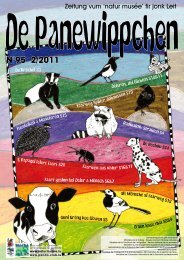Publi.complète - Musée national d'histoire naturelle
Publi.complète - Musée national d'histoire naturelle
Publi.complète - Musée national d'histoire naturelle
Create successful ePaper yourself
Turn your PDF publications into a flip-book with our unique Google optimized e-Paper software.
Delsate, Steur, Schneider, Thuy Lower to Middle Emsian flora and fauna from Consthum and Merkholtz<br />
Preliminary report of Lower to Middle Emsian<br />
(Lower Devonian) flora and fauna from Consthum<br />
and Merkholtz (Grand Duchy of Luxembourg)<br />
with Porolepid (Sarcopterygii) and Heterostracan<br />
Fish remains *<br />
Summary :<br />
1. Introduction<br />
A first field trip (2001) in the quarry at Consthum<br />
(E1b of the geological map, aributed to the Lower<br />
Emsian), mainly for mineralogical researches (Dr<br />
S. Philippo and M. Schneider, MnhnL), yielded<br />
various plant remains and bivalvia. Further preparation<br />
revealed the presence of fish centimetric<br />
scales. As these fish remains are older than the<br />
Upper Emsian placoderms fragments (Lellingen<br />
and Hosingen) known until now as the older Luxembourg<br />
vertebrates, a more detailed exploration<br />
Ferrantia • 36 / 2003<br />
Dominique Delsate<br />
<strong>Musée</strong> <strong>national</strong> d’histoire <strong>naturelle</strong> de Luxembourg, Section Paléontologie<br />
25, rue Münster, L-2160 Luxembourg-Grund<br />
Hans Steur<br />
15, Laan van Avegoor, NL-6955 BD Ellecom, The Netherlands<br />
Marcel Schneider<br />
<strong>Musée</strong> <strong>national</strong> d’histoire <strong>naturelle</strong> de Luxembourg, Section Paléontologie<br />
25, rue Münster, L-2160 Luxembourg-Grund<br />
Ben Thuy<br />
44, Rue des Champs, L-7312 Steinsel<br />
Lower Devonian vertebrate’s remains were found from two near localities, together with abundant plants<br />
(Pteridophyta) and invertebrate’s material. Porolepid scales are clearly identified, and a shield fragment is<br />
aributable to a heterostracan agnatha. The plants identification remains tentative because association of sporangia<br />
with axes is lacking. The bivalvia have poor biostratigraphic worth; other invertebrates are fragmentary.<br />
began in March 2002, with the aim of collecting<br />
more complete fossils.<br />
Abundant plant remains and a fish plate fragment<br />
(most probably an agnatha) were also recovered<br />
from nearby rocks (may be slightly younger) at<br />
the Merkholtz quarry. Similar regional finds are<br />
summarized.<br />
*Résultats d’un projet de recherche réalisé par le Centre de recherche du<br />
<strong>Musée</strong> <strong>national</strong> d’histoire <strong>naturelle</strong> à Luxembourg.<br />
Results of a research project conducted by the research centre of the<br />
National Museum of Natural History in Luxembourg<br />
9


